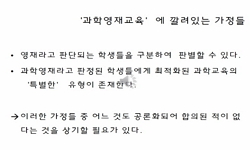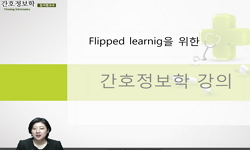We put a lot of interests in the effective way to form a lab group in the lab class of science. Currently, the lab class in Korea is progressed according to lab group formation of random division monotonously. In other words, a class is divided into a...
http://chineseinput.net/에서 pinyin(병음)방식으로 중국어를 변환할 수 있습니다.
변환된 중국어를 복사하여 사용하시면 됩니다.
- 中文 을 입력하시려면 zhongwen을 입력하시고 space를누르시면됩니다.
- 北京 을 입력하시려면 beijing을 입력하시고 space를 누르시면 됩니다.
https://www.riss.kr/link?id=T10060173
- 저자
-
발행사항
진주 : 慶尙大學校 情報科學大學院, 2004
-
학위논문사항
학위논문(석사) -- 경상대학교 정보과학대학원 , 정보처리학과 , 2004. 2
-
발행연도
2004
-
작성언어
한국어
- 주제어
-
KDC
376.544 판사항(4)
-
발행국(도시)
경상남도
-
형태사항
iv, 35p. ; 27cm.
-
일반주기명
참고문헌: p. 33
- 소장기관
-
0
상세조회 -
0
다운로드
부가정보
다국어 초록 (Multilingual Abstract)
Therefore, we came up with 2 different method to form the lab group and tried to analyze understanding on science and academic achievement of each method. In one method, each group was formed with 7 students according the student numbers. In the other method, each group was formed with 7 students that had similar grades in a field of science test.
In order to achieve the goal of the study, the study was done on students in the 1st grade. The first formation method was applied from the end of mid-term exam to the beginning of final exam in the first semester and the second formation method was applied from the beginning of the second semester till the beginning of mid-term exam in the second semester. Also, the results of final exam of first semester and midterm-exam of second semester were analyzed to compare the effect of the two formation method.
We put a lot of interests in the effective way to form a lab group in the lab class of science. Currently, the lab class in Korea is progressed according to lab group formation of random division monotonously. In other words, a class is divided into a certain number of lab groups randomly and the groups perform the experiment they were given.
Therefore, we came up with 2 different method to form the lab group and tried to analyze understanding on science and academic achievement of each method. In one method, each group was formed with 7 students according the student numbers. In the other method, each group was formed with 7 students that had similar grades in a field of science test.
In order to achieve the goal of the study, the study was done on students in the 1st grade. The first formation method was applied from the end of mid-term exam to the beginning of final exam in the first semester and the second formation method was applied from the beginning of the second semester till the beginning of mid-term exam in the second semester. Also, the results of final exam of first semester and midterm-exam of second semester were analyzed to compare the effect of the two formation method.
목차 (Table of Contents)
- 목차 = ⅰ
- 표목차 = ⅲ
- Abstract = ⅳ
- Ⅰ. 서론 = 1
- 1. 연구의 필요성과 목적 = 1
- 목차 = ⅰ
- 표목차 = ⅲ
- Abstract = ⅳ
- Ⅰ. 서론 = 1
- 1. 연구의 필요성과 목적 = 1
- 2. 연구 문제 = 3
- 3. 연구의 의의 = 3
- Ⅱ. 학업 성취도에 대한 평가 방법 = 6
- 1. 학업성취도 평가란 = 6
- 2. 블룸(Bloom)의 행동목표 분류 준거 = 7
- 3. 학업성취도의 평가 방법 = 9
- 1) 지필 고사 = 9
- Ⅲ. 연구대상과 실험 절차 = 10
- 1. 연구 대상 및 환경적 요인 = 10
- 2. 실험 계획 = 11
- 3. 실험 수업에서의 실험조 편성 방법 = 12
- 4. 평가 도구 = 13
- 5. 실험 연구의 한계 = 14
- 6. 실험조 편성 방법에서의 기대효과 = 15
- Ⅳ. 결과 분석 = 19
- 1. 지식에 대한 분석 = 19
- 2. 이해에 대한 분석 = 21
- 3. 적용에 대한 분석 = 23
- 4. 총점에 대한 분석 = 24
- 5. 학교에서 실시한 총점에 대한 분석 = 27
- Ⅴ. 요약 및 논의 = 31
- 참고문헌 = 33
- 부록 = 34












